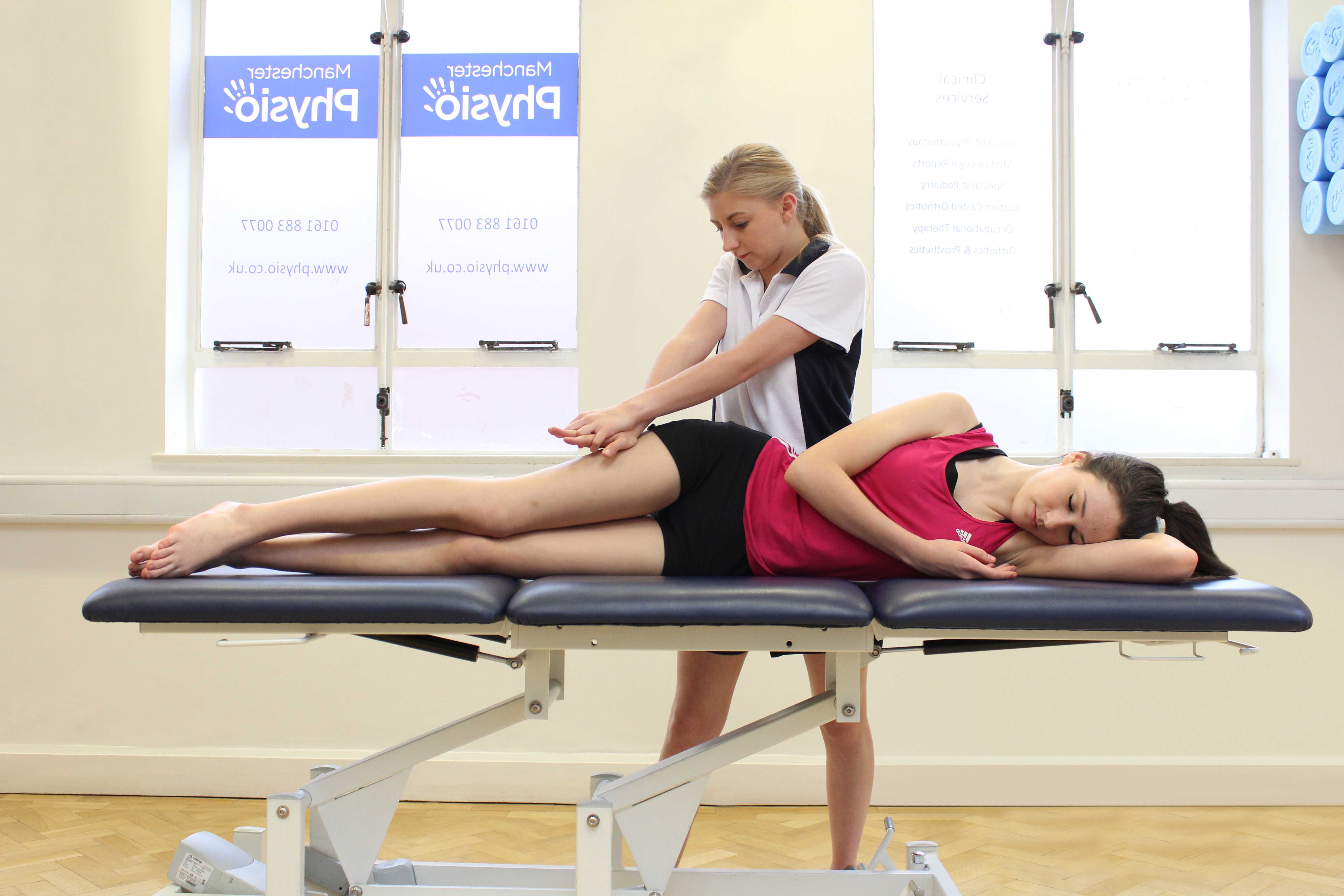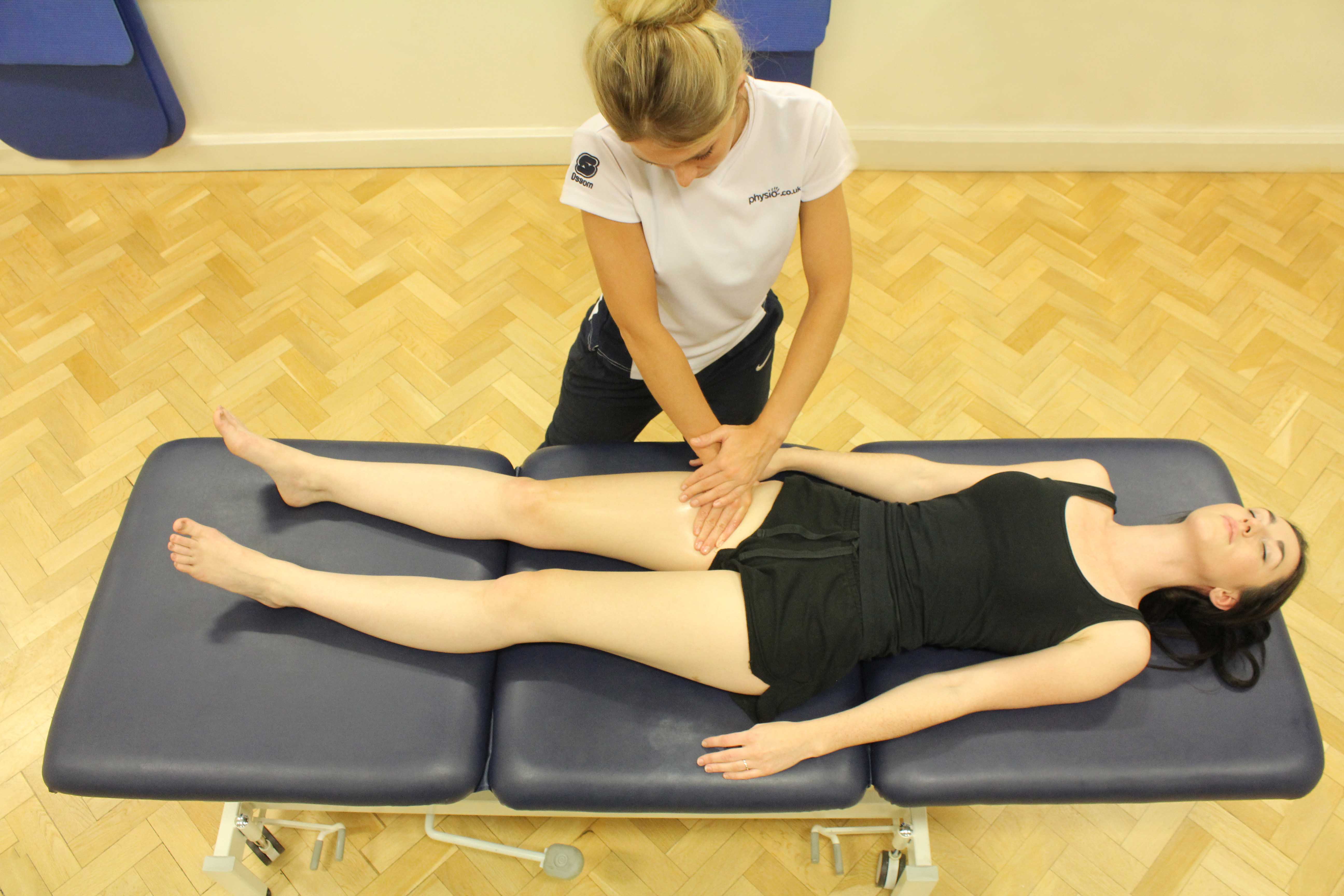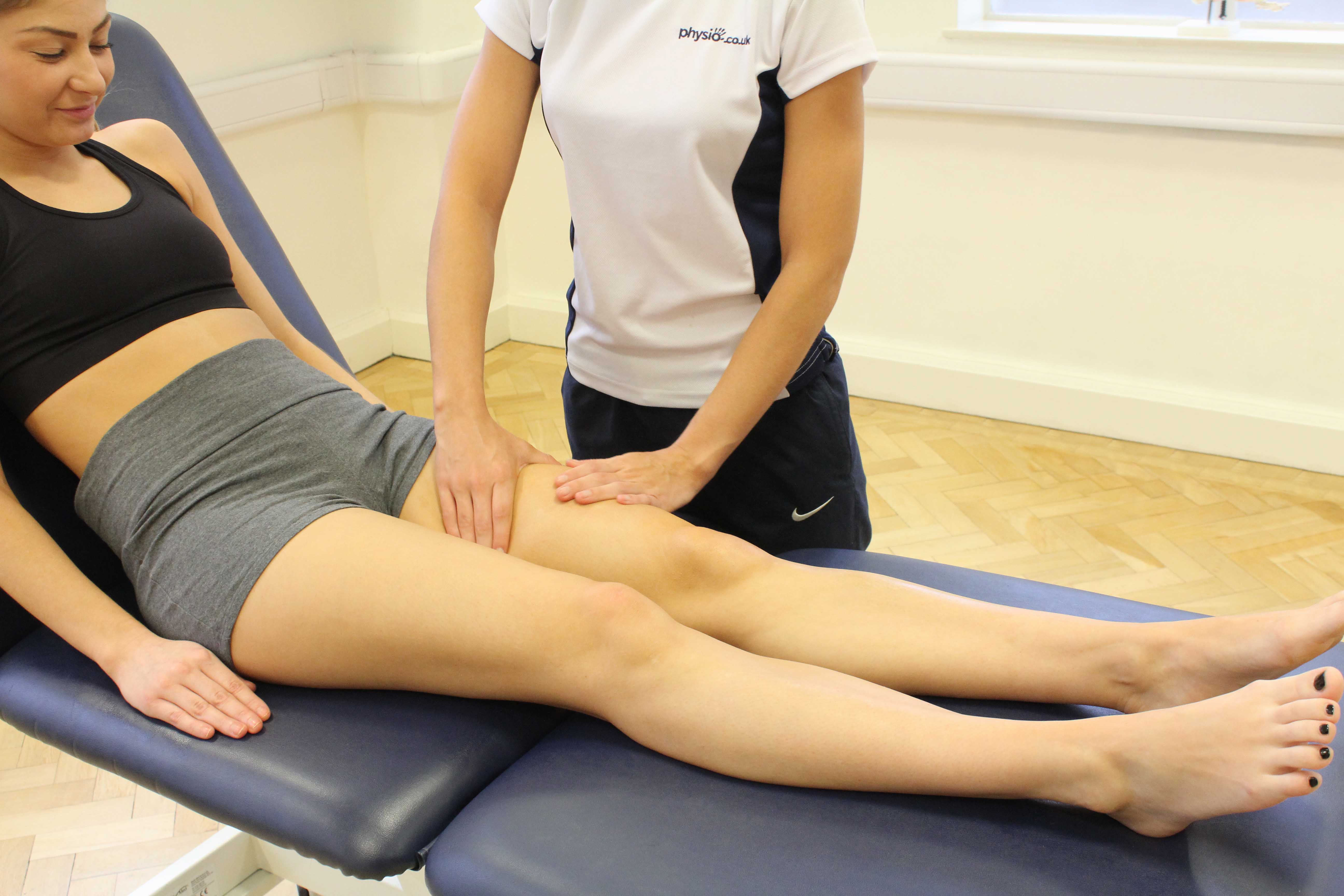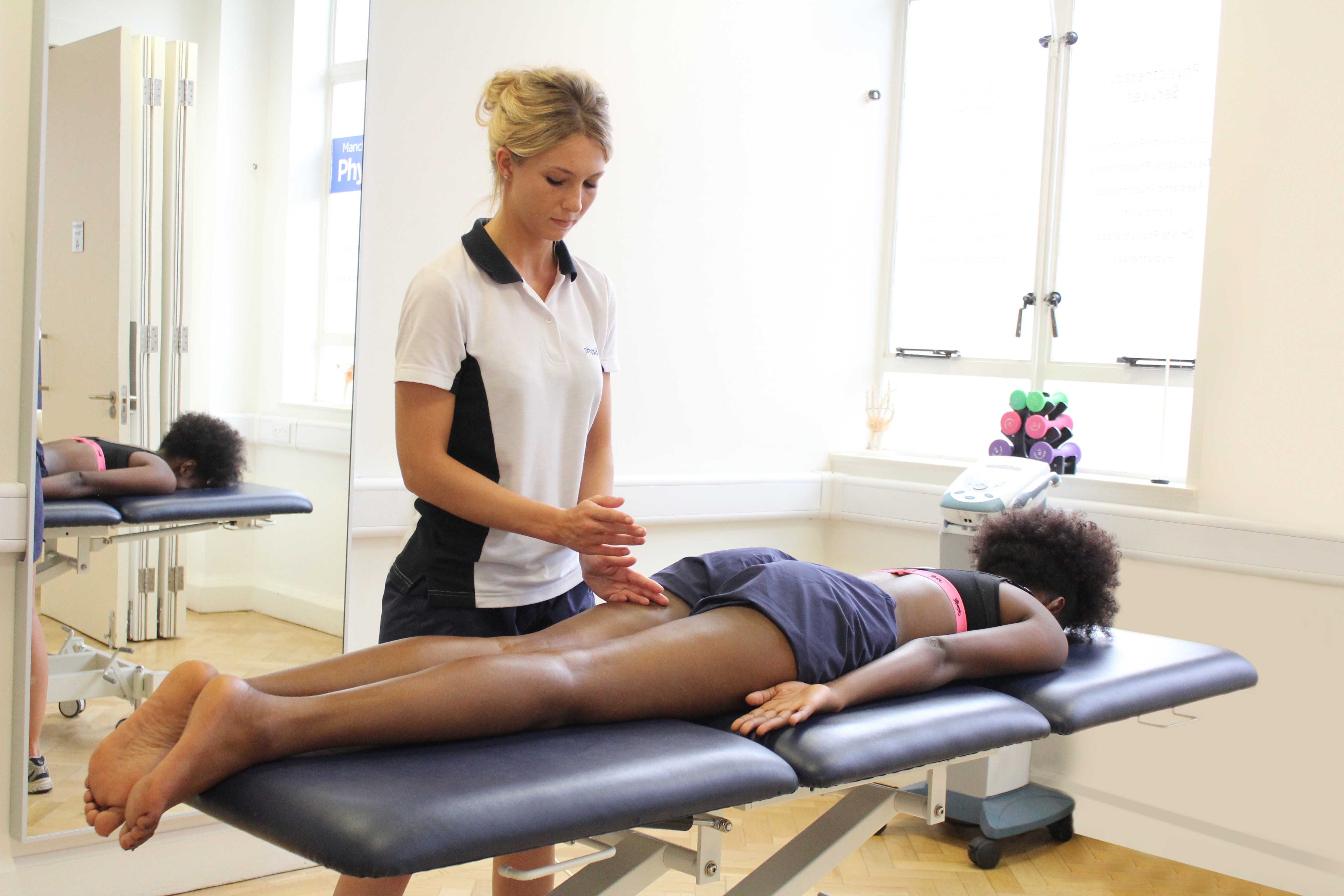Physiotherapy for femoral anteversion/antetorsion surgery
Femoral anteversion is when the femur, or thigh bone, is positioned abnormally. Anteversion means ‘leaning forward’. Femoral anterversion is, therefore, a condition in which the femoral neck leans forward with respect to the rest of the femur. This causes the lower limbs to rotate internally (the knees and feet to turn inward). It is twice as likely to be seen in girls and most typically is detected after the age of 3 years.
Femoral anteversion is a developmental abnormality caused by the position of the baby in the uterus leading to stiff hip muscles.It is not clear what causes this but it has a tendency to run in families. Femoral anteversion can also occur in individuals with congenital hip dysplagia, cerebral palsy, Legg-Calve-Perthes and slipped capital femoral epiphysis.
When a child is first learning to walk, femoral anteversion can create an intoeing appearance. As the knees and feet turn in, the legs look like they are bowed. The bowed leg stance helps the child achieve greater balance as they stand. However, walking may be clumsy and balance is not as steady when the child tries to stand and walk with their feet close together or with their feet turned out. This may cause them to trip and fall.
Antetorsion is used to describe abnormal anteversion. Surgery may be required to straighten the thigh bone if the anteversion is severe.
 Above: Deep tissue massage of the vastus laterallis muscle
Above: Deep tissue massage of the vastus laterallis muscleDoes my child need surgery?
Surgery is only indicated if the anterversion is over 50 degrees and the child is at least 8 years of age. In 99% of cases as the child gets older, femoral anteversion decreases naturally.
Surgical procedure
The only surgical treatment currently used is called a "femoral derotational osteotomy." The femur is cut, rotated in and then fixed it in a more correct anatomical position using metal plates. The plates are very strong so a cast is rarely necessary. This procedure is only used in the more severe cases and in the older child.
 Above: Soft tissue massage of the quadricep muscles
Above: Soft tissue massage of the quadricep musclesSymptoms after surgery
Following a femoral derotational osteotomy your child will initially experience pain and stiffness but this will be well controlled with pain killers and muscle relaxants.
The length of stay in hospital for this surgery is typically 4-5 days and in the majority of cases there will be a soft padded bandages over the incisions. Sometimes a hip spica is a cast used for extra support but can delay recovery.Passive movements (assisted) are encouraged as soon as possible following surgery. During your hospital stay, a physiotherapist should see your child immediately after the surgery and assist them with a variety of bed exercises and mobility. Once able, your child will be given a walking aid and encouraged to partially weight bear for the initial stages of their recovery.
 Above: Rolling soft tissue massage of the quadricep muscles
Above: Rolling soft tissue massage of the quadricep musclesPhysiotherapy after surgery
Physiotherapy should be continued following discharge from hospital as this will improve your childsflexibility and function. Physiotherapy treatment will help your child with their mobility and teach them the correct ways to move.
At Physio.co.uk we can offer early intervention and therefore maximise your childs potential as we have no waiting lists. Our specialist physiotherapists at Physio.co.uk are experienced in treating children following this surgery.
An extensive graduated treatment programme will be developed and short and long term goals will be set individualised to your child. Recovery can be a lengthy process, taking between 3-6 months.
 Above: Hacking percusion massage of the hamstring muscles
Above: Hacking percusion massage of the hamstring muscles1-6 weeks
Your child’s comfort level is the determining factor as to when to start physiotherapy treatment. It is important in the first month to control pain and maintain flexibility around the knee and hip joint. It is also important to protect the hip from any excessive movements especially hip flexion to prevent any further damage. Physiotherapy at this stage will include:
- Positioning advice in sitting and during sleep to decrease pain.
- Gentle mobilisation of the hip and knee
- Encouraging passive and active movements
- Hydrotherapy to relax tight muscles and allow movements not possible on the ground
6-12 weeks
During the second month your child’s physiotherapy programme with Physio.co.uk will focus on pain management, gait re-education and and increasing the range of movement in the hip and knee. Physiotherapy activities will include:
- Full weight bearing as able
- Standing with assistance or using a walking aid
- Continue working on range of movement exercises in hip, knee and ankle
- Strengthening and stretching exercises
- Weight shifting activities
13+ weeks
Physiotherapy treatment at this stage will focus onprogression of exercises and activities from previous weeks. Your child should have minimal pain and be able to fully weight bear. Treatment goals will include improving range of movement in the hip and knee, muscle strengthening to support the knee and hip, balance training and increasingwalking distance. Treatment will include general fitness and exercises to get your child back to a level they were previously. Your physiotherapy will include:
- Full weight bearing exercises
- Gait training
- Strengthening at stretching exercises
- Balance activities
- Active range of movement exercises
- Focusing on sporting activities
- Stair mobility
Physiotherapy treatment is critical after your child’s surgery as it will reduce pain and stiffness, aid in the healing of the surgery, improve range of movement and allow them to return to normal activity as soon as possible.
At Physio.co.uk our specialised physiotherapists provide fun and stimulating exercises to gain good mobility in your child. Our motivated physiotherapists will improve your child’s gait by strengthening and stretching muscles, improving range of movement and focusing on activities that are important to them.
Physiotherapy treatment will involve using a variety of exercises that are both enjoyable and effective in a stimulating and safe environment.
If your child has had surgery or is due to have surgery and you would like more information or to book a full assessment call us now on 0330 088 7800, book online or alternatively request a free phone consultation

 0330 088 7800
0330 088 7800

































